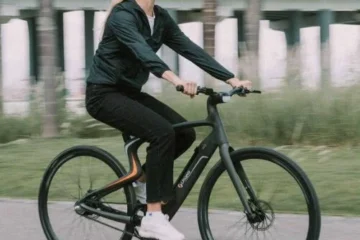Black Widow, one of the most compelling and complex characters in the Marvel Universe, has evolved significantly over the years, both in character depth and style. From her early comic book appearances to her role in the Marvel Cinematic Universe (MCU), Natasha Romanoff’s journey mirrors a larger shift in how female heroes are portrayed. Her character’s growth not only underscores her resilience but has also influenced generations of fans and cosplayers alike. Through each iteration, her Black Widow costumes have become iconic, symbolizing her strength, adaptability, and mystique.
The Origins of Black Widow: Comic Beginnings
Introduced in Tales of Suspense #52 in 1964, Black Widow began as a Soviet spy, an adversary to Iron Man, complete with gadgets and tricks typical of Cold War espionage. Natasha’s character was initially written with an aura of mystery, aligning her with the “femme fatale” archetype. Her wardrobe matched this persona, with sleek, dark attire befitting a spy, yet without the signature jumpsuit fans would later associate with her.
In the early comic days, her costume was more practical than tactical, lacking the high-tech elements that would later define her look. Over time, she became a more integral part of the Avengers team, evolving into a full-fledged hero rather than a spy with ambiguous allegiances. Her costume began to take on a sleeker, more defined appearance, reflecting her transformation from an anti-hero to a trusted team member.
The Classic Black Widow Look: Iconic Jumpsuit and Belt
One of the most iconic aspects of Black Widow’s look is her sleek black jumpsuit. This uniform, which first appeared in the 1970s, became her defining feature. The jumpsuit allowed her agility, flexibility, and style, all of which were crucial for a character skilled in hand-to-hand combat and espionage. Additionally, her utility belt, complete with the distinctive “widow’s bite” gauntlets, reinforced her status as a skilled fighter and resourceful hero.
With her appearance in various comic books, the costume evolved with subtle changes, such as upgraded tech elements and additional weapons. These adjustments were reflective of her character development as she became more integrated with the Avengers and their tech-driven missions. The Black Widow costume became synonymous with Natasha’s character: tactical, understated, and deadly efficient.
The Black Widow in the Marvel Cinematic Universe: Scarlett Johansson’s Influence
When Scarlett Johansson first portrayed Black Widow in Iron Man 2 (2010), she brought a fresh, grounded realism to the character that had been previously unseen. Johansson’s Black Widow was more than a spy—she was an Avenger with a mysterious past and complex motivations. This portrayal transformed Black Widow from a secondary character to a critical player in the MCU.
The MCU version of Black Widow retained the black jumpsuit, but it was upgraded with modern elements such as Kevlar armor, weapons storage, and a sleek, futuristic design. Her cosplay costume became popular among fans, with each new appearance adding details that made the outfit more realistic and battle-ready. Johansson’s portrayal cemented Black Widow as a powerful, independent character, influencing cosplay and fan tributes worldwide.
In later films like Avengers: Age of Ultron and Infinity War, her suit underwent more changes to reflect her character’s growth and adaptability. The jumpsuit was modified with tactical armor, weaponry upgrades, and even a new color palette in Infinity War with green accents. This shift represented her alignment with the Avengers and showcased her readiness to adapt to any situation, much like her character.
Black Widow’s Transformation in Endgame and Black Widow
In Avengers: Endgame, Black Widow reached a pivotal moment in her character arc. Having grown from a solitary spy to a core member of the Avengers, Natasha’s story culminates in her heroic sacrifice. Her costume in Endgame is practical and low-key, yet it underscores her commitment to the mission and her teammates. It’s a reminder that her identity goes beyond the suit; it’s her actions and choices that make her a hero.
The long-awaited Black Widow solo film gave fans deeper insight into her past, exploring her ties to the Red Room and her “family” of spies. Here, her look evolved again, adding a white suit to her repertoire, which symbolized her moving away from the shadows and embracing her complex identity. This shift added layers to her costume, blending her past as an agent with her present as a hero. The white suit, a departure from her traditional black, became instantly iconic, showing her character’s willingness to step out of her usual role and confront her past.
Impact of Black Widow’s Costumes on Cosplay Culture
Black Widow’s costume has become a staple in the cosplay community, largely due to its simplicity, functionality, and iconic design. The jumpsuit, gloves, and widow’s bite bracelets make for a recognizable and adaptable cosplay costume, suitable for fans of all ages and skill levels. Over the years, the costume has undergone numerous variations, each resonating with fans who admire Black Widow’s character growth and tenacity.
Cosplayers often add their own interpretations, blending elements from different films or incorporating personal touches. Natasha’s MCU-inspired looks have particularly influenced the cosplay community, allowing fans to express their appreciation for her character. Whether they choose the original black jumpsuit, the Infinity War tactical suit, or the distinctive white suit from Black Widow, fans use the costume to connect with Natasha’s resilient spirit.
Black Widow’s Legacy in the Marvel Universe
As one of the original Avengers, Black Widow’s legacy in the MCU is profound. Her journey from an isolated spy to a dedicated hero is one of growth, redemption, and empowerment. She proves that a hero’s strength lies not only in powers but in resilience, intelligence, and loyalty. Through her sacrifices, Natasha becomes a model of heroism, inspiring future Avengers like Yelena Belova, who takes up her mantle in the MCU.
The legacy of her character continues to resonate with audiences who value depth, strength, and complexity in their heroes. The cosplay costumes of Black Widow have become a symbol of empowerment, embodying her evolution from a spy to a central figure in the Marvel Universe.
Conclusion: A Hero Beyond the Costume
The evolution of Black Widow in the Marvel Universe is more than just a change in wardrobe; it’s a reflection of her journey as a character. From the comic books to the big screen, Natasha Romanoff’s story highlights the power of redemption, friendship, and sacrifice. Each adaptation of her costume reflects her growth, with fans worldwide embracing her look and legacy. Black Widow’s costumes have become a symbol of resilience and empowerment, capturing the essence of a hero who transcends both the black jumpsuit and her role as a spy.
Through each iteration, Black Widow has inspired audiences to embrace their strength, intelligence, and compassion, making her a lasting icon in both the Marvel Universe and pop culture.




